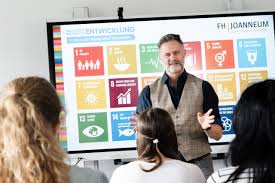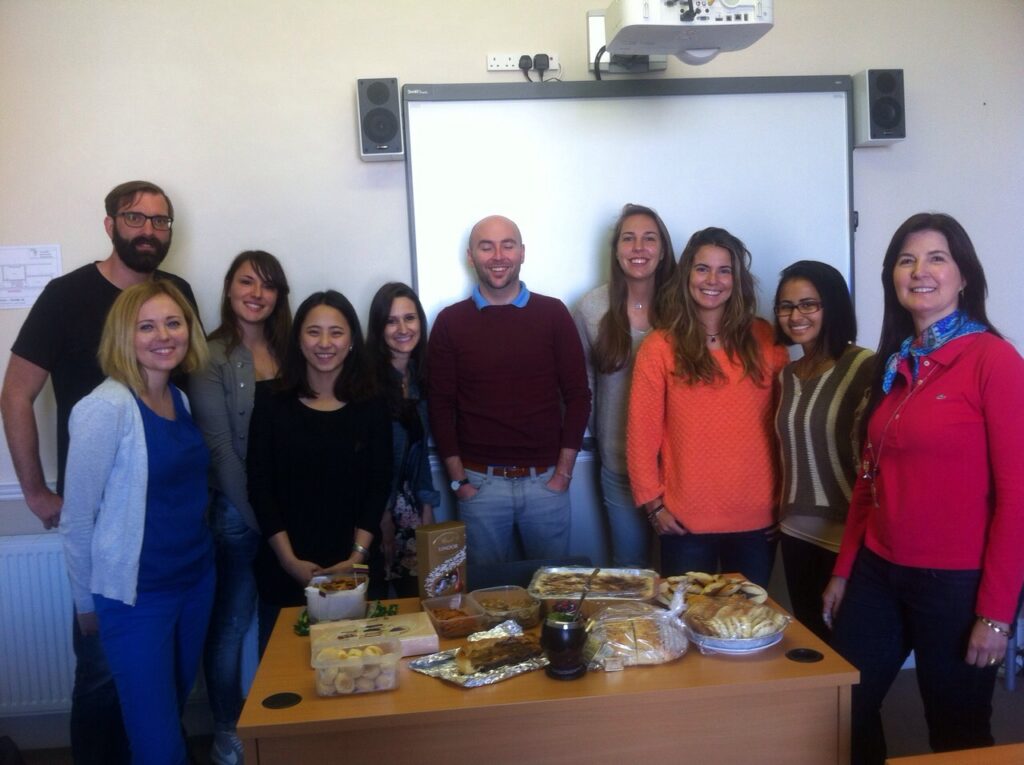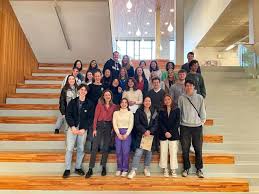The Future of Learning: 7 Emerging Trends Transforming Education in Europe
- 1. Learning Goes Beyond the Classroom
- 2. Digital Fluency Becomes the New Literacy
- 3. Wellbeing & Mental Health Take Centre Stage
- 4. Green Skills & Sustainability Shape Curricula
- 5. Inclusive, Personalised Learning for All
- 6. Microcredentials and Skills-Based Learning Rise
- 7. Global Citizenship & Intercultural Skills Take the Lead
- Why Erasmus+ and CPD Matter More Than Ever
Education across Europe is entering a bold new chapter, one where innovation meets inclusion, and digital tools blend with human-centred values. As classrooms evolve and learners’ needs shift, we’re seeing the rise of powerful trends that promise to reshape how we teach, learn, and connect across borders.
Whether you’re an educator, school leader, policymaker, or lifelong learner, here are 7 emerging trends that are transforming the future of education in Europe—and why now is the time to get excited about what comes next.
1. Learning Goes Beyond the Classroom

The traditional four walls of a classroom are no longer the only place where meaningful learning happens. Education is expanding into new spaces; urban gardens, historical sites, art studios, virtual reality platforms, and community hubs. Teachers and learners alike are stepping outside the textbook and into hands-on, real-world learning environments.
Think students analysing biodiversity in a local park, apprentices learning marketing skills at co-working hubs, or intercultural exchanges happening entirely online through virtual classrooms. The rise of place-based learning, service learning, and community engagement is reshaping how we understand knowledge.
Why it matters: Learning in context fosters deeper understanding, critical thinking, and transferable skills. Erasmus+ is already championing this evolution through cross-sector projects that connect education with culture, enterprise, and civil society, turning learners into active participants in their communities and beyond.
2. Digital Fluency Becomes the New Literacy
Digital skills go far beyond knowing how to open a document or use an app. In today’s world, learners need to critically understand the digital landscape: how algorithms shape information, how AI can be both a tool and a risk, and how to communicate effectively and ethically online.
From teaching students how to code through creative storytelling, to helping educators develop media literacy and cybersecurity awareness, digital fluency now includes emotional intelligence, digital rights, and the ability to navigate misinformation.
Students (and teachers) must now understand:
- How algorithms and AI shape what we see and believe
- How to spot misinformation and disinformation online
- How to communicate with empathy, clarity, and ethics across digital platforms
- How to protect their data, identity, and wellbeing in the digital world
Digital fluency now includes:
- Media literacy: Understanding the power and pitfalls of media in shaping worldviews
- Digital rights & responsibilities: Knowing how to behave—and advocate—online
- Coding for creativity: Encouraging students to become creators, not just consumers
- Cybersecurity awareness: Protecting data and building safe digital habits
How Teachers Can Stay Ahead in a Fast-Changing Landscape

With technology evolving rapidly, continuous professional development is key. Fortunately, there are more opportunities than ever for educators to upskill and innovate:
Erasmus+ CPD courses: Some of our training centres in Ireland offer practical, hands-on courses in digital pedagogy, AI for education, gamification, blended learning, and more—designed for European educators.
Online learning communities: Platforms like eTwinning and School Education Gateway offer free digital resources, peer networks, and webinars to help teachers stay informed and inspired.
Microcredentials and digital badges: Teachers can now earn recognition for short, skills-based learning—ideal for staying agile in their practice while building professional portfolios.
Collaborative projects: Erasmus+ and other EU initiatives fund teacher exchanges and cross-border digital projects, providing real-world practice in leading digital learning experiences.
Reflective practice & experimentation: Staying digitally fluent isn’t just about courses—it’s about staying curious. Try new tools. Reflect on what works. Share with colleagues. Model digital resilience for your students.
Learn more about our courses for the 21st Century Classroom here.
Why it matters: True digital fluency empowers learners to create, innovate, and adapt in fast-changing environments. With EU-backed initiatives like Digital Europe and the European Education Area, funding and policy are actively supporting a more digitally confident Europe, where no one is left behind. Equipping educators with cutting-edge digital fluency is essential not only for effective teaching but for preparing students to thrive in a global, digital society.
3. Wellbeing & Mental Health Take Centre Stage

The emotional and psychological wellbeing of both learners and educators is no longer treated as an optional “add-on” to academic life, it is now recognised as a foundational pillar of effective education. Across Europe, there is growing momentum to embed wellbeing into the heart of teaching and learning practices, not just as a response to post-pandemic realities, but as a proactive strategy for sustainable, inclusive, and resilient education systems.
Educators, schools, and policymakers are embracing wellbeing as a shared responsibility, supported by training, culture change, and systemic design.
Social-Emotional Learning (SEL): Building Resilient Learners
SEL goes beyond academic success, it teaches young people to understand themselves and others. Programmes across Europe are now helping learners develop:
- Empathy – understanding different perspectives and fostering compassion
- Self-awareness – recognising and managing emotions, triggers, and behaviours
- Relationship skills – resolving conflict, listening actively, and collaborating
- Responsible decision-making – evaluating consequences and making ethical choices
Teachers trained in SEL create classrooms where emotional literacy is valued as much as cognitive skills thus laying the groundwork for lifelong learning, wellbeing, and positive citizenship.
Mindfulness and Mental Health Check-Ins: Embedding Daily Habits
Simple, consistent routines can create safe, emotionally aware environments. Many schools and training centres are incorporating:
- Mindfulness exercises (e.g., breathing, body scans, quiet reflection) to increase focus and reduce anxiety
- Daily check-ins (verbal, visual, or digital) that allow learners to express how they feel
- Emotion mapping tools to help children and teens build vocabulary around their emotional states
These practices normalise emotional expression and offer early opportunities for intervention and support—not just for learners, but for educators too.
Greener, Safer, Holistic Learning Spaces
Wellbeing is also influenced by the physical and social environment. Across Europe, schools are redesigning their spaces to be:
- Greener – with natural light, plants, outdoor learning spaces, and eco-conscious design
- Safer – reducing bullying and violence through inclusive policies and peer-led programmes
- Holistic – promoting movement, play, artistic expression, and rest as essential to the learning process
By creating environments that support both body and mind, schools foster a culture where learners and staff feel calm, connected, and ready to learn.
Why It Matters
Without wellbeing, learning simply cannot thrive. The data is clear: students experiencing stress, anxiety, or trauma find it harder to concentrate, retain information, and engage socially. Similarly, educators experiencing burnout, overwhelm, or lack of support are less able to teach effectively.
That’s why Erasmus+ and EU-wide education strategies are prioritising mental health and wellbeing like never before. From staff training on stress management and emotional resilience, to youth-led projects exploring mental health through art, sport, or peer mentoring, wellbeing is being woven into the fabric of education.
Supporting the whole person – emotionally, mentally, and socially – is not only ethical, but essential for building Europe’s future with compassion, collaboration, and care.
4. Green Skills & Sustainability Shape Curricula

Sustainability is no longer a niche topic, it’s the new literacy for the 21st century. Across Europe, educators are reimagining the purpose of education: not just to prepare students for jobs, but to empower them to protect the planet, make ethical choices, and drive green innovation.
Whether in early years, secondary school, VET, or adult learning, climate education is becoming integral, not optional. Teachers are embedding sustainability across subjects and disciplines, not just in science, but in economics, arts, tech, and language learning too.
Educators are actively exploring:
- Project-based learning linked to the Sustainable Development Goals (SDGs): Students investigate real-world problems like water scarcity, food waste, or fast fashion, and co-create local solutions.
- Eco-entrepreneurship and green innovation labs: Learners are encouraged to design sustainable products, services, and campaigns, blending creativity with environmental impact.
- Hands-on learning in biodiversity, permaculture, and circular economies: School gardens, zero-waste kitchens, and local partnerships make learning tangible and community-based.
- Whole-school sustainability plans and student-led climate action: From reducing school energy use to running tree-planting drives, learners become active citizens, not passive observers.
Why it matters:
The green transition is not just about awareness, it’s about action. From future jobs in clean energy and sustainable tourism to local leadership in climate resilience, learners need green competencies that blend knowledge, skills, and values.
What educators can do:
- Integrate climate themes into core subjects e.g. statistics about pollution in maths, eco-themed debates in language classes.
- Use local environments as learning spaces: parks, farms, water systems, or recycling centres can all become green classrooms.
- Develop interdisciplinary projects that combine science, business, and citizenship.
- Invite guest speakers such as local climate activists, engineers, or permaculture designers to talk about green careers and community action.
Teacher tip:
– Join the EU Climate Pact (https://climate-pact.europa.eu/index_en )
– Take part in GreenComp – European Sustainability Competence Framework to stay up to date and enhance your own green teaching toolkit.
(https://joint-research-centre.ec.europa.eu/greencomp-european-sustainability-competence-framework_en)
5. Inclusive, Personalised Learning for All

No two learners are the same—so why should their learning experience be? Across Europe, schools and training centres are embracing inclusive and personalised education to meet the diverse needs of today’s classrooms.
From neurodiverse learners to those newly arrived in a country, from gifted students to those facing socio-economic barriers, modern education must be flexible, empathetic, and inclusive.
Thanks to advances in educational psychology, assistive technology, and Erasmus+-funded initiatives, educators can now offer learning that is:
Adaptive
Digital platforms now offer AI-powered personalisation that tailors content, pace, and feedback to each student’s learning style and speed. These tools can identify where a learner is struggling and offer targeted support, whether in reading, maths, or languages. This allows teachers to better support mixed-ability classrooms without leaving anyone behind.
Multilingual & Culturally Responsive
In many schools, learners speak more than one language, or arrive with limited proficiency in the local language. Erasmus+ projects are supporting multilingual teaching resources, bilingual assistants, and community interpreters. Culturally responsive materials that reflect learners’ backgrounds help foster a sense of identity, dignity, and belonging.
Accessible
Learners with physical disabilities, sensory impairments, or neurodiverse conditions (like autism, ADHD, or dyslexia) require content in different formats. Educators are increasingly using:
- Subtitled videos
- Screen readers and voice tools
- Dyslexia-friendly fonts and layouts
- Visual schedules, symbols, and sensory supports
- Universal Design for Learning (UDL) principles to make lessons accessible from the start
This isn’t about ‘special’ education, it’s about inclusive design for everyone.
Emotionally & Socially Inclusive
Inclusive classrooms also focus on representation, safety, and participation. This means:
- Using restorative practices to manage behaviour
- Encouraging collaborative learning, where students learn from each other’s experiences
- Tackling unconscious bias and creating environments where all identities are respected
Why it matters:
Inclusion is not a luxury. It’s a requirement for educational equity and social cohesion. Europe’s classrooms are increasingly diverse, and every learner deserves to feel seen, heard, and supported. Erasmus+ is investing heavily in this area, through teacher training, inclusive learning technologies, and intercultural exchanges that challenge stereotypes and build empathy.
Suggestions for teachers and trainers:
- Audit your teaching materials for bias, representation, and accessibility
- Use learning profiles or simple questionnaires to understand your learners’ preferences and needs
- Explore Erasmus+ projects or platforms like eTwinning to find examples of inclusive practice
- Use apps like Kahoot!, Quizlet, or Read&Write to support learners who benefit from visual or assistive formats
- Advocate for inclusive leadership in your school or training centre, change starts with you
6. Microcredentials and Skills-Based Learning Rise
A four-year university degree is no longer the only path to personal and professional success. In today’s world, flexibility, relevance, and adaptability are key and that’s exactly what microcredentials, skills passports, and digital badges offer.
What are Microcredentials?
They are short, focused learning experiences often online or blended, that help learners develop specific skills. Think:
- A 20-hour course in sustainable tourism
- A certificate in digital marketing for small businesses
- A badge in intercultural communication or digital inclusion
These credentials can be stacked, shared, and recognised across institutions and borders, making them ideal for:
- People changing careers
- Young people entering the workforce
- Employees upskilling in fast-changing industries
- Entrepreneurs or freelancers needing to expand their skillset quickly
Why This Matters for Learners
- Flexible & Fast: Learn at your own pace, around your job or family commitments.
- Employability-Focused: Gain exactly the skills employers are asking for – today.
- Confidence Boosting: Bite-sized success builds momentum. Each badge or module motivates the next step.
Example: A hospitality worker could earn a microcredential in “Customer Service in English” or “Green Practices in Food Service,” making them more attractive to eco-conscious employers or international tourists.
Why This Matters for Teachers and Trainers
The rise of microcredentials represents a paradigm shift in education and educators are key to making it work. Teachers are no longer just knowledge transmitters. They are facilitators, coaches, and co-designers of flexible learning journeys.
To thrive in this new model, educators need to embrace CPD (Continuous Professional Development) and stay updated on:
- How to design and assess competency-based learning
- Using digital tools for certification and tracking progress
- Embedding 21st-century skills into existing courses
- Understanding EQF and Europass frameworks so credentials are aligned with EU-wide standards
Why CPD is essential:
- The pace of change in digital learning, AI, and labour market demands means yesterday’s teaching methods may not prepare learners for tomorrow’s jobs
- CPD fosters professional confidence, creativity, and career progression
- It helps educators model lifelong learning to their students
Practical Ideas for Teachers:
- Take part in Erasmus+ CPD programmes or eTwinning teacher exchanges
- Explore platforms like EPALE, European Schoolnet, or Coursera for Teachers for free CPD
- Use tools like Open Badges, Canva for Education, or Google Workspace to create microlearning modules
- Collaborate with local employers to co-design short courses that respond to real-world skills gaps
Bridging Skills and Inclusion
Microcredentials are also a powerful tool for equity and inclusion. They can:
- Support marginalised learners who don’t have access to traditional education
- Provide confidence and progression routes for NEETs (Not in Employment, Education or Training)
- Recognise informal learning (e.g., caregiving, volunteering, peer mentoring) with portable, verifiable skills
The Future: Learner-Centred, Skills-Led Education
We are entering an era where what you can do matters more than where you studied. Microcredentials are unlocking new ways to learn, teach, and grow—and creating real opportunities for personal and professional transformation across Europe.
Next steps for schools and training providers:
- Audit your current courses and see how they could be modularised or micro-credentialed
- Begin mapping learning outcomes to the European Qualifications Framework (EQF)
- Train staff in competency-based learning and digital certification
- Empower learners to track their skills with skills passports, ePortfolios, or Europass profiles
7. Global Citizenship & Intercultural Skills Take the Lead
In today’s increasingly interconnected world, educating global citizens is not just a noble goal, it’s a practical necessity. Learners in every corner of Europe are growing up in societies shaped by migration, climate change, digital interdependence, and shared economic and environmental challenges. As a result, intercultural understanding, empathy, and collaboration have become core competencies, not optional extras.
So, how is education responding?
Across Europe, schools, training providers, and adult education centres are embedding global citizenship and intercultural skills into curricula through:
- Cross-border collaboration: Programmes like Erasmus+, eTwinning, and virtual mobility projects connect learners and educators with their peers across Europe and beyond. These experiences foster real-time cooperation, language immersion, and cultural exchange—building trust and expanding worldviews.
- Language learning for connection, not just grades: While grammar and vocabulary remain important, modern language teaching is shifting toward real-life communication, cultural nuance, and multilingual inclusion. Speaking another language becomes a bridge, not a barrier.
- Dialogue-based projects and experiential learning: Whether it’s through Model UN simulations, intercultural storytelling, or collaborative art, learners are gaining first-hand practice in empathy, negotiation, and active citizenship.
Why It Matters for Teachers and Students
Europe’s future depends on young people who are able to navigate diversity, resolve conflicts peacefully, and lead with emotional and cultural intelligence. Intercultural skills are critical not only in social settings, but in almost every workplace from healthcare to tourism, diplomacy to digital tech.
And these aren’t just student goals. Educators, too, must model global citizenship—which means staying informed, flexible, and open to lifelong learning.
How CPD Supports Global Education
To teach intercultural competence effectively, teachers need structured opportunities to:
- Participate in international training, courses, and job shadowing through Erasmus+ mobility
- Learn new methodologies like intercultural dialogue, collaborative project-based learning, and inclusive language teaching
- Improve their own foreign language skills or adapt their classroom language to be more inclusive and globally relevant
- Reflect on unconscious bias, privilege, and inclusion practices
Ongoing CPD in this area isn’t just beneficial, it’s transformational. It strengthens teachers’ ability to lead difficult conversations, engage students with diverse experiences, and contribute to a more cohesive and democratic European society.
Erasmus+ in Action
Erasmus+ is playing a vital role in helping schools and training centres embed global values into education. From intercultural awareness training for teachers, to student exchange programmes that build real friendships across borders, the programme promotes the idea that a united Europe depends on shared understanding, not uniformity, but mutual respect.
Whether you’re an English teacher in Spain, a maths tutor in Ireland, or a vocational trainer in Poland, the tools of global citizenship are the same: empathy, communication, and a commitment to inclusion.
Why Erasmus+ and CPD Matter More Than Ever
In today’s rapidly evolving world, education isn’t just about teaching; it’s about learning how to adapt, innovate, and collaborate. Erasmus+ has become a vital pillar in this transformation by connecting educators, learners, and institutions across Europe. The programme promotes lifelong learning, international collaboration, and professional growth, helping educators embrace new ideas and pedagogical practices.
By participating in Erasmus+ projects or CPD (Continuing Professional Development) courses, educators gain access to:
- A vibrant European network of professionals and change-makers
- Immersive, high-quality training opportunities across diverse cultural contexts
- Inspiring learning environments that blend tradition, innovation, and inclusion
Our training centres and courses are designed to help you stay ahead of the curve, whether you’re building digital skills, promoting sustainability, or transforming your classroom for a more inclusive future.
